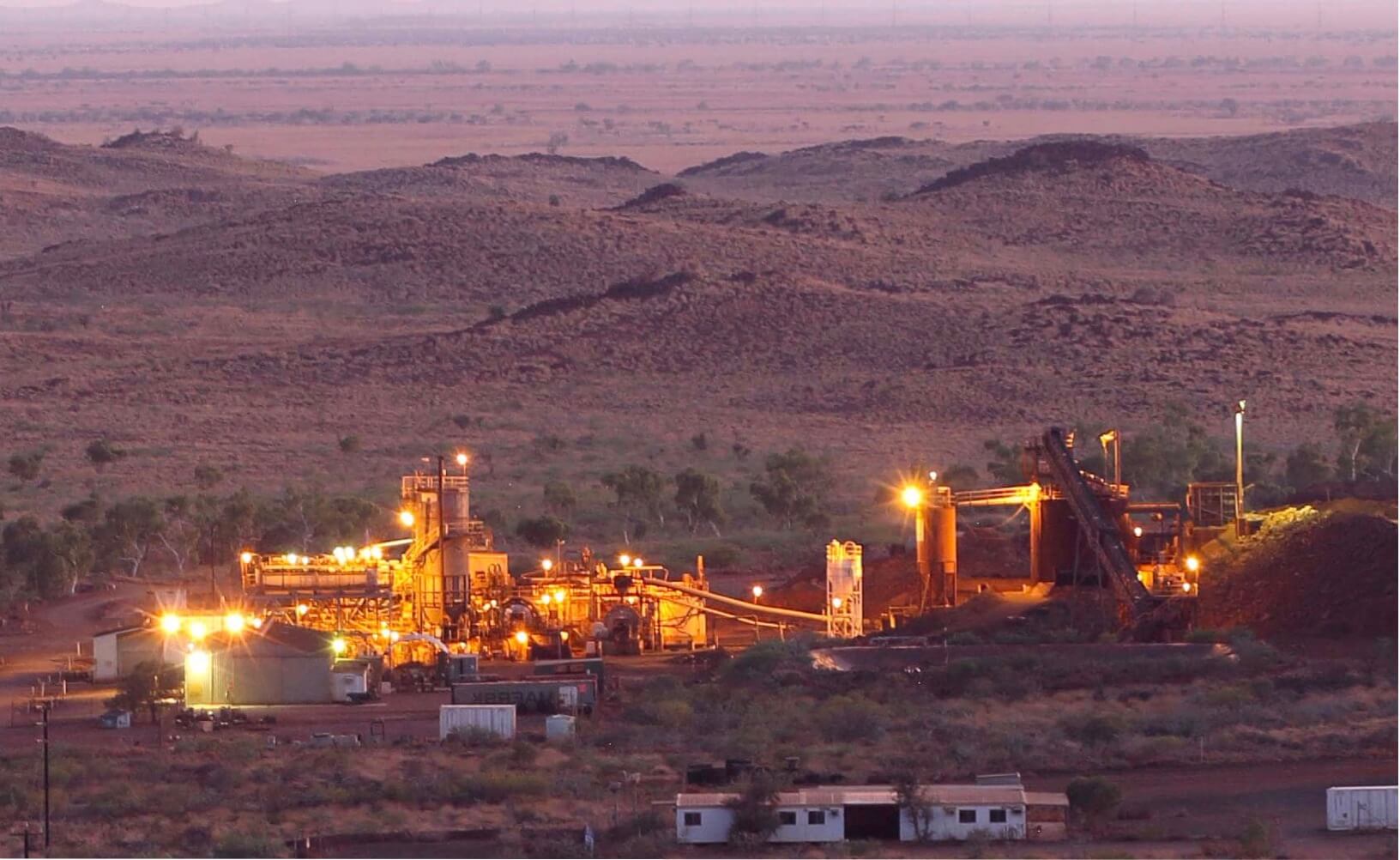
PROJECTS
Radio Hill -
Our strategic asset
Overview
Our 100%-owned Radio Hill Processing Plant is the only processing plant in the region and significantly reduces the capital and lead time to begin production at Carlow Castle.
- Project Highlights
35km
Positioned via road from Karratha
100% owned
Processing Plant - only plant in region.
Gold
Approved for gold production, with options for other ore processing.
Artemis has the only processing plant in the region. This significantly reduces the capital and lead time to start a mine.
The Radio Hill nickel-cobalt-copper deposit was discovered in the early 1970s. It forms part of a small Archaean, synorogenic-synvolcanic Ni-Cu bearing mafic intrusion containing a minor ultramafic component near its basal contact. The massive and disseminated Ni-Cu-Co sulphides are hosted by thin gabbroic units underlying layered ultramafic-mafic sequence. Sulphides are confined to the feeder conduit or depressions of basal contact.
Artemis RC drilled the shallow mineralisation up-dip from the Fox underground workings on a regular grid in 2018. This drilling, sampling and assaying was verified by AM&A, and found to be fit for purpose, and reported in accordance with the 2012 JORC Code for reporting exploration results and Mineral Resources.
AM&A used the Artemis drilling only, ignoring the earlier drilling as it could not be verified as conforming to the JORC Code (2012), to model the shallow resources These Indicated resources are estimated AM&A to be 1.15 million tonnes at 0.52% Ni, 277ppm Co and 0.73% Cu. Considering the spacing of the drill intersections, quality of the drilling and sampling and the degree of understanding of the geological controls on the mineralisation, AM&A have classified all the reported resources at Radio Hill as Indicated according to the JORC Code (2012).
Geology and mineralisation
Radio Hill is a small Archaean, 2892 ± 34 Ma, synorogenic-synvolcanic Ni-Cu bearing mafic intrusion containing a minor ultramafic component near its basal contact and is probably comagmatic with nearby Mount Sholl and Munni Munni intrusions. It is considered to be a Voisey’s Bay, Canada analogue. The massive and disseminated Ni-Cu-Co sulphides are hosted by thin gabbroic units underlying layered ultramafic-mafic sequence. Sulphides are confined to feeder conduit or depressions of basal contact.
Mineralisation is patchy blebs of medium grained disseminated to matrix sulphides in the basal peridotite to olivine pyroxenite. Pyrrhotite, with sub-ordinate pentlandite, and chalcopyrite, forms lobate aggregates up to 12% volume of the Ultramafic host. Pyrrhotite forms layers up to 20m thick, 8m above the basal contact of an intrusion.
Post-intrusion deformation has tilted the deposit 25-40° to the southeast. The geometry has been modified by northerly trending sinistral faults.
Dolerite dykes have intruded the orebody with relaxation, following deformation, into pre-existing weakness created by faulting. Two mine-site wide dolerite dykes have truncated the orebody and act as pillars for the underground mining.
- Massive medium to very coarse grained pyrrhotite-chalcopyrite-pentlandite ore that is often strongly brecciated and displays quartz-carbonate-chlorite veining
- Stringer/gash vein, disseminated and blebby pyrrhotite-chalcopyrite-pentlandite mineralisation associated with tremolite-actinolite-chlorite alteration and minor carbonate veining,
- Disseminated fine grained pyrrhotite-chalcopyrite-pentlandite sulphides hosted by the gabbro, and pyrrhotite dominant sulphides within the ultramafic immediately overlying the gabbro.
The gabbroic portion of the layered cumulate complex hosts the mineralisation. A generalised stratigraphic profile within the mining domain, in order of decreasing stratigraphic height, consists of ultramafic, orebody gabbro and volcanic basement.


